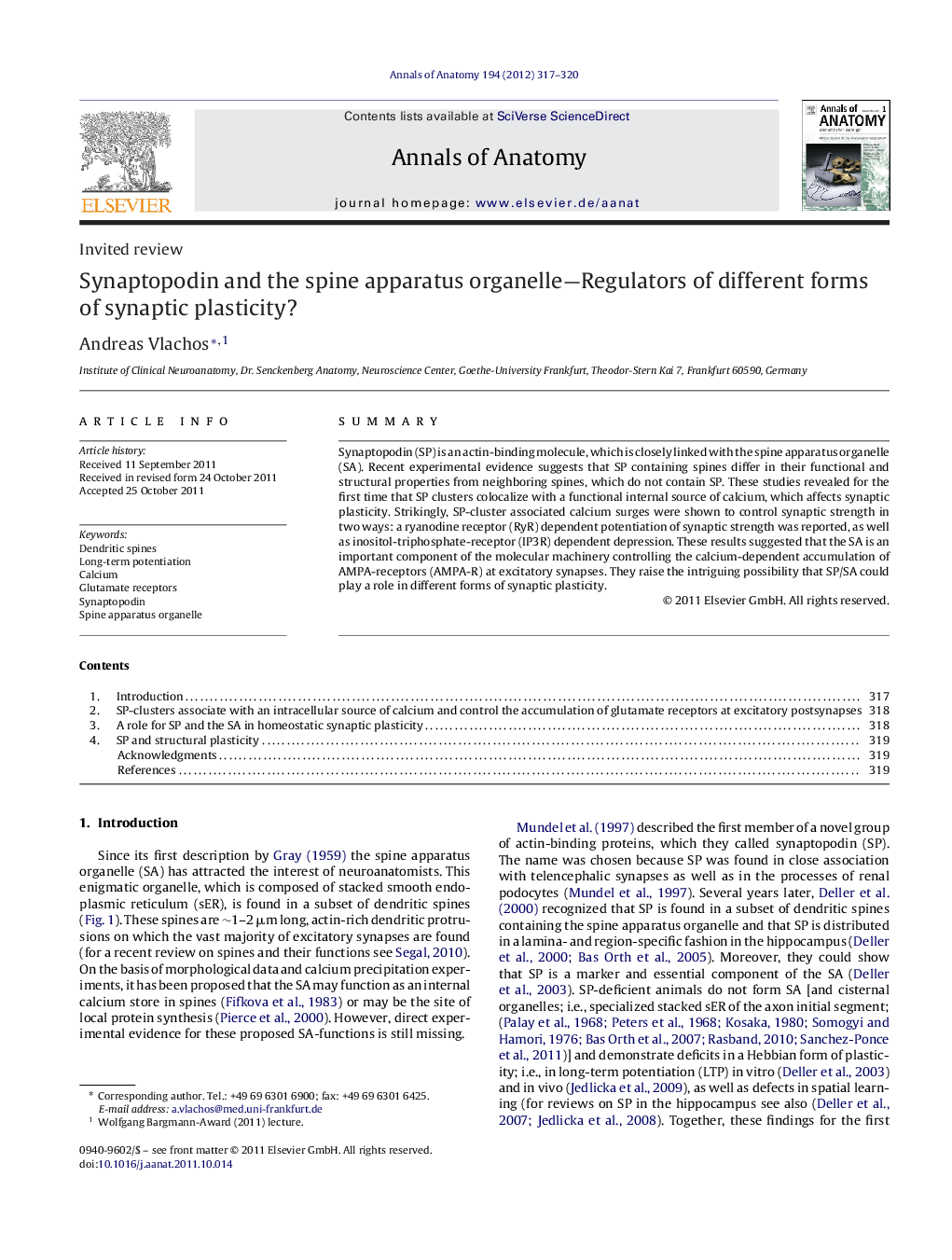| Article ID | Journal | Published Year | Pages | File Type |
|---|---|---|---|---|
| 8461688 | Annals of Anatomy - Anatomischer Anzeiger | 2012 | 4 Pages |
Abstract
Synaptopodin (SP) is an actin-binding molecule, which is closely linked with the spine apparatus organelle (SA). Recent experimental evidence suggests that SP containing spines differ in their functional and structural properties from neighboring spines, which do not contain SP. These studies revealed for the first time that SP clusters colocalize with a functional internal source of calcium, which affects synaptic plasticity. Strikingly, SP-cluster associated calcium surges were shown to control synaptic strength in two ways: a ryanodine receptor (RyR) dependent potentiation of synaptic strength was reported, as well as inositol-triphosphate-receptor (IP3R) dependent depression. These results suggested that the SA is an important component of the molecular machinery controlling the calcium-dependent accumulation of AMPA-receptors (AMPA-R) at excitatory synapses. They raise the intriguing possibility that SP/SA could play a role in different forms of synaptic plasticity.
Related Topics
Life Sciences
Biochemistry, Genetics and Molecular Biology
Cell Biology
Authors
Andreas Vlachos,
